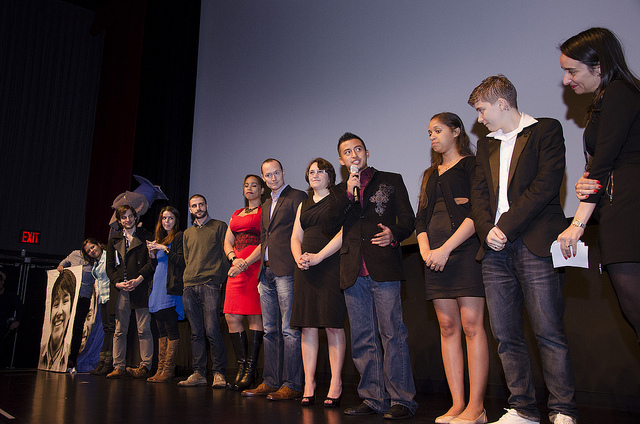I Learn America: Teen Immigrants Navigate a Brooklyn Public High School

This post was written by DOC NYC blogger Maggie Glass

The high school students at the International High School at Lafayette in Brooklyn are teenagers like many others. They struggle with homework and sports, first loves and gender identity. But as recent arrivals to the United States, their lives are layered with challenges unique to new immigrants: a fear of deportation, language barriers, homesickness, and cultural pressures. I LEARN AMERICA, the new documentary by directors Jean-Michel Dissard and Gitte Peng, follows the stories of five high schoolers who are all navigating America in their own ways.
Despite their youth, the subjects of I LEARN AMERICA are remarkably open and articulate about their experiences. At the Q&A after the film, Dissard talked about his initial feelings upon entering the International High School. “The first day on, I met those kids and those kids knew who they were,” he said. “They were in a safe place that allowed them to be themselves.”
Brandon, from Guatemala, describes a traumatic journey to the United States to live with a mother he barely knew. Itar, from Pakistan, feels pressure from her father to enter a prearranged marriage. Sandra, from Poland, and Jennifer, from the Dominican Republic, talk about how it feels to look different (in Sandra’s case, dressing “like a boy”) and how neither enjoys spending time with other people from their home countries. Sing, from Myanmar, is the most isolated of the group. With limited English skills and few friends, he is frustrated by his inability to communicate and by the difficulties of life in New York City.
After seeing the students grow and learn over the course of a year at International High School, the audience was especially excited to see many of those same students onstage after the screening. When asked what it was like to be filmed for the documentary, Brandon discussed how comfortable he felt with Dissard. “So many times I was able to share things with him I couldn’t share with anybody else,” he said. “And as we went through the whole process of recording the film, he helped me understand so many things.”
One of the teachers onstage also reflected upon being filmed as she interacted with her students. “It was sometimes difficult,” she said, “but it also brought out the best in me as a teacher to be able to ask my students these honest questions with a third observing eye. The idea is that we would be honest to ourselves and honest to the camera.” Dissard closed by encouraging the audience to support new immigrants and the movement at large. “The way we welcome them will define who we are,” he said.

